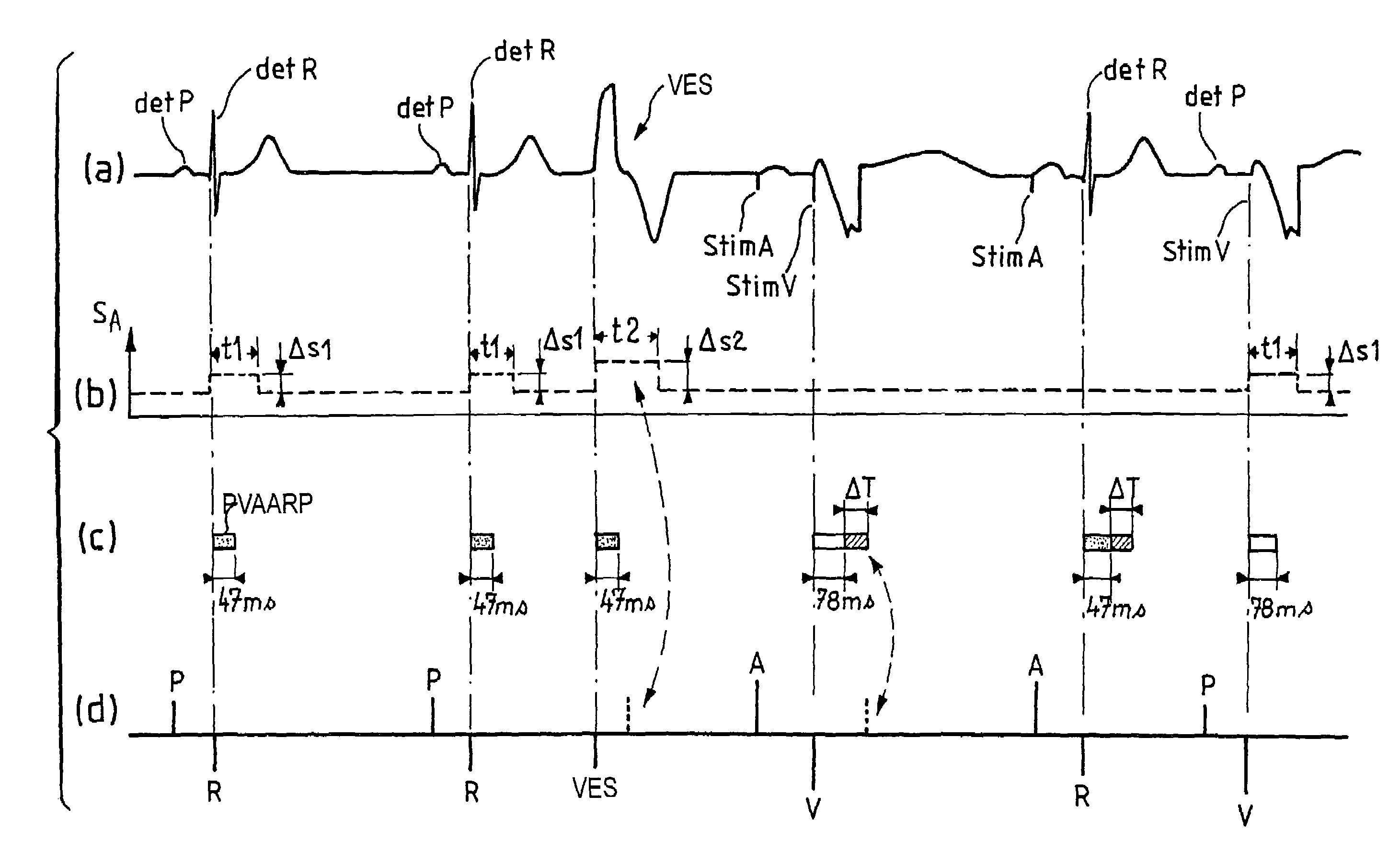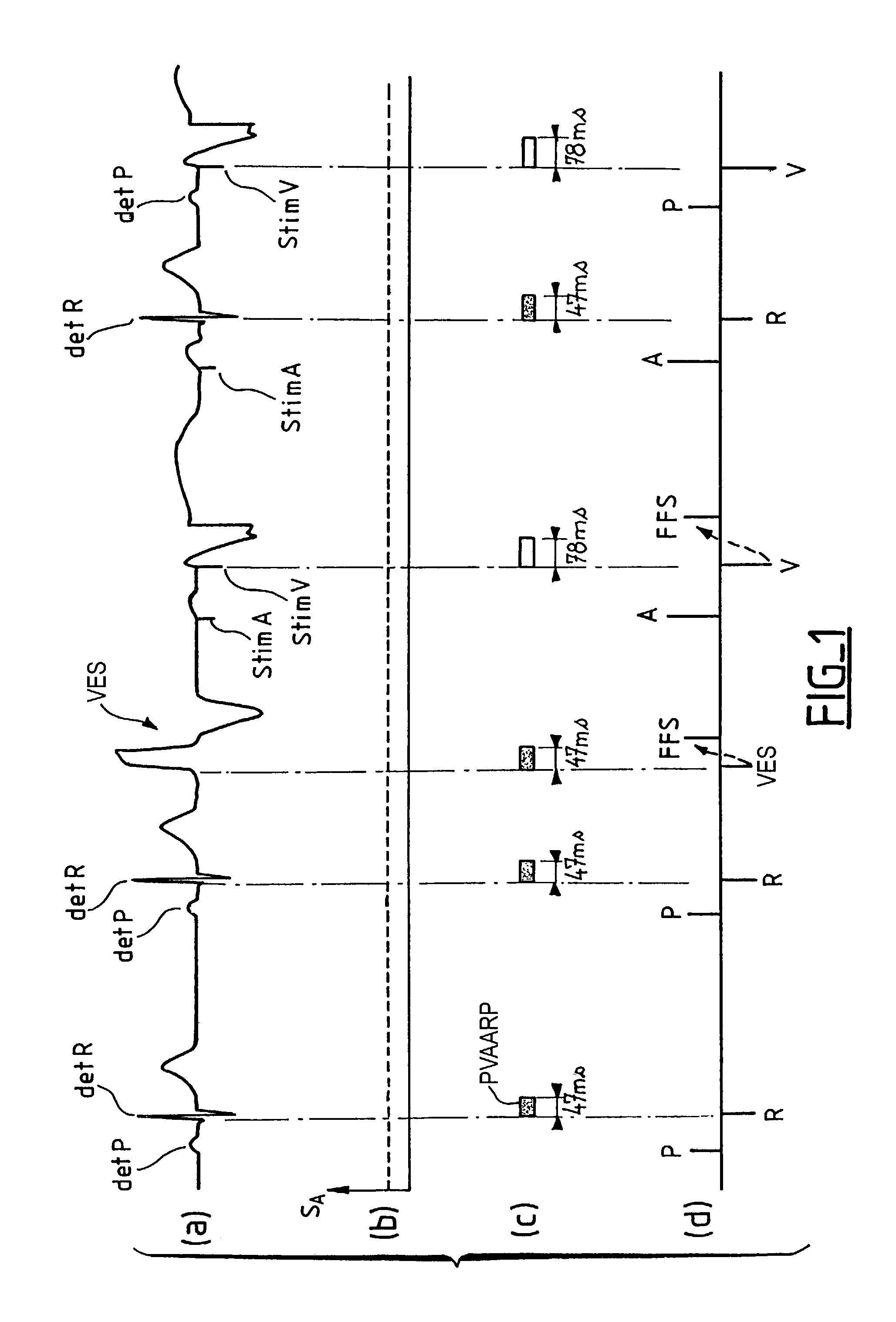Atrial arrhythmia detection for an active implantable medical device
a technology atrial arrhythmias, which is applied in the field of active implantable medical devices, can solve the problems of prejudicious implant operation and detection of such events at the atrium
- Summary
- Abstract
- Description
- Claims
- Application Information
AI Technical Summary
Benefits of technology
Problems solved by technology
Method used
Image
Examples
Embodiment Construction
[0018]In FIGS. 1 and 2, the chronogram (a) illustrates an ECG signal on which various cardiac events follow one another. The term “events” refers to either the signals coming from a spontaneous depolarization (a detected event), or the signals resulting from stimuli applied by the apparatus (a stimulated event). These events are referred in the following way:[0019]P or detP: spontaneous atrial cardiac event (detected)[0020]R or detR: spontaneous ventricular cardiac event (detected)[0021]A or StimA: stimulated atrial cardiac event (stimulated)[0022]V or StimV: stimulated ventricular cardiac event (stimulated)
[0023]The first two cycles illustrated on each chronogram (a) correspond to spontaneous, physiological cycles, followed by a ventricular extrasystole (VES), followed by three stimulated cycles with the first cycle being an atrial and a ventricular stimulation, the second cycle being an atrial stimulation followed only by a spontaneous ventricular depolarization, and the third cyc...
PUM
 Login to View More
Login to View More Abstract
Description
Claims
Application Information
 Login to View More
Login to View More - R&D
- Intellectual Property
- Life Sciences
- Materials
- Tech Scout
- Unparalleled Data Quality
- Higher Quality Content
- 60% Fewer Hallucinations
Browse by: Latest US Patents, China's latest patents, Technical Efficacy Thesaurus, Application Domain, Technology Topic, Popular Technical Reports.
© 2025 PatSnap. All rights reserved.Legal|Privacy policy|Modern Slavery Act Transparency Statement|Sitemap|About US| Contact US: help@patsnap.com



